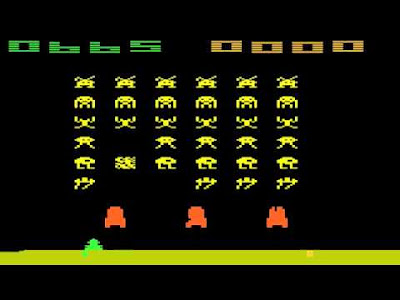Nintendo made headlines when they announced the NES Classic Mini, the limited-edition nostalgia machine and cash cow for scalpers on eBay, would be re-released on Friday 29th June. Anxious not to miss out a second time, I pre-ordered my console directly with the company. I’m still extremely surprised to have received mine in the post ten days early, but if Nintendo wanted me to write a review it, they knew what to do... I have no evidence of that, of course.
Firstly, I have never owned a games console before this one. In fact, I never really play video games – I still call them “video games.” I remember wanting a Sega Master System once, which was more successful in the UK and Europe than the NES – it might have been the games available, and the general noise Sega made at the time. Moreover, our family owned proper computers, which the British gaming industry still targeted more in the 1990s – we had a Commodore Plus-4, then two Acorn Electrons, followed by an Amiga 500, before my brother joined the PlayStation bandwagon, and I switched to PCs for school work.
Why did I buy a games console now, and why the NES Classic Edition? I have never been interested in the immersive experience that comes with the big, expensive games released these days on the PC, PlayStation or Xbox, and I have no intention of spending hours playing a game to get all of the story it wishes to tell – these needs have already been met for me by the cinema. At the same time, outside of Tetris and Angry Birds, I would appreciate a game that could keep me entertained for a few minutes, something the Atari 2600 could not do with its restrictive set-up.
Therefore, the NES Classic Mini, regardless of the attention to detail in reproducing a miniature version of the original Nintendo Entertainment System, a box of grey textured plastic intended to resemble a 1980s video cassette recorder (down to the front-loading cartridge slot), and irrespective of the nostalgia of playing the first two “Legend of Zelda” games, “Duck Hunt” and a brace of games with “Mario” in the title, it is a machine that presents the right type of game to someone that never plays games. This is meant to be your childhood, but for me, it is brand new.
I know of “Super Mario Bros,” and have seen people play it, and I surprised myself in completing the first level at my first try. However, as with the other games I have played so far – the original “Mario Bros,” “Donkey Kong” and “Pac-Man” - I have yet to get much further: all the sprites moving about on screen, and the screeching square-wave music and sound effects, have meant I have only played for half an hour at a time so far. I could turn the volume down, but the noises help you know what you have done.
It has to be said, I have played the first level of “Pac-Man,” one of the simpler video games there could possibly be, about twenty times now, and I have only reached the first level twice. That should be endlessly frustrating to me, but because Nintendo repurposed the cartridge “Reset” button on the console as a way to save your progress, returning to the main menu and pick another game, I can remain in control. While the short cable for the game controller has meant I have plugged the console into the spare HDMI port on my PC monitor, it does mean I can keep that “Reset” button close at hand.
I can imagine the one major problem that affected game consoles years ago was the cathode-ray tube televisions into which they were plugged: there was always an audible hum that came when a computer-generated signal was displayed on a TV, plus it was never possible to match up lines of pixels with the TV’s scan lines. Therefore, playing on a new TV or monitor, the admirable reproduction of the original NES graphics is as sharp as they can be – the optional “CRT” feature, if you need it, feels reductive and futile, and I have never turned it on. What is more, because the difference between the old PAL and NTSC TV systems meant NES games played slower on the old 50Hz PAL system - while I can play these old games at the 60Hz speed they were made to run, Super Mario’s legs are no longer.
For the last few weeks, an original Nintendo Entertainment System console, with one controller and no cartridges, has been on sale in an electronics shop in my local high street for £110. Meanwhile, I bought the NES Classic Mini, a spare controller, and a power supply for £68, and I have thirty solid, memorable and enjoyable games, that remained so without needing to be updated, just as the same can be said of Monopoly, Scrabble and Ouija boards. Nintendo could have provided access to their Virtual Console service, but that provide competition against is other consoles – unlike the upcoming Atari VCS, the NES Classic Mini is all it needs to be, without trying to play PC games too.
Despite the wait from 2016, I am happy the NES Classic Mini lived up to the hype, proving to be my perfect games console - and, at the rate I’m progressing through Pac-Man, Nintendo may release a Wii Classic by the time I finish all the games.

















